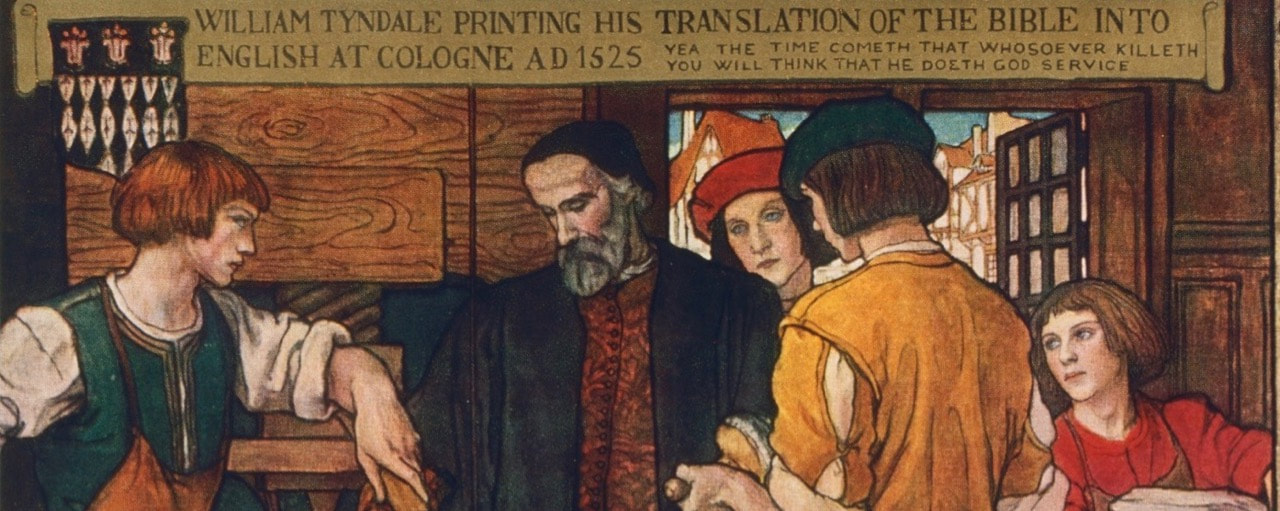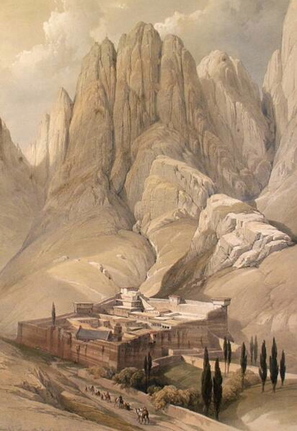Indiana Von Tischendorf
|
A dusty ancient middle-eastern city filled with camels, strange smells, and mysterious traders. Ten days on camel back through the oven-like heat of the desert to a solid wall where acceptable visitors are pulled up in a chair to the entrance thirty feet above ground. A treasure-filled library in an isolated monastery. A burial vault guarded by the 1,100-year-old skeleton of the monastery janitor.
It was at the Saint Catherine’s Monastery in the Sinai Desert that Constantin von Tischendorf, a twenty-nine-year-old German biblical scholar with the charm, savvy, and sense of adventure of Indiana Jones, found one of the most important biblical manuscripts ever discovered. In the spring of 1844 the young and celebrated Tischendorf took a long and difficult journey to Cairo, and then traveled to Saint Catherine’s, a 1,300-year old monastery built on the site of the burning bush where God spoke to Moses at the foot of Mount Sinai. After being welcomed by the monks and given a tour, Tischendorf was led to the library. Neglect, ignorance, decay, and dust were everywhere. In a basket of manuscripts used for kindling to light fires, Tischendorf found 129 parchment leaves of a Septuagint manuscript dating from about AD 350. He was allowed to take 43 of the 129 leaves with him, which he presented to the library of Leipzig University in Germany. Tischendorf made a second trip to Mount Sinai in 1853. Of course the monks remembered the other eighty-six leaves, but they did not know where they were. Tischendorf made a third trip in1859. He was greeted by the monks and allowed to search the monastery—but found nothing. Before leaving empty-handed, Tischendorf visited a young monk in his cell and presented the monk with a copy of his edition of the Septuagint that had been published in Leipzig. “I also have a copy of the Greek Septuagint,” the monk said, and brought out a manuscript wrapped in a red cloth. It was Sinaiticus—not just the eighty-six leaves Tischendorf had seen before, but much more. |
All night Tischendorf read one of the oldest existing manuscripts of the Bible. “It really seemed a crime to sleep,” he wrote in his diary. Finding this treasure was only the first step.
Through convoluted politicking, the Russian ambassador to Turkey persuaded the monks at Saint Catherine’s to “lend” the manuscript to the Russian czar, and Tischendorf personally carried Codex Sinaiticus to Saint Petersburg. In 1933 the Soviet Union, needing hard currency, sold the manuscript to Great Britain for 100,000 pounds. Today 347 leaves of Codex Sinaiticus are on display at the British Library in London. The forty-three leaves that Tischendorf took from Saint Catherine’s in 1844 are still at Leipzig University. Fragments of five leaves are at the National Library of Russia in St. Petersburg, and eleven additional leaves and fourteen fragments are at Saint Catherine’s, discovered by workmen repairing the monastery in 1975. |

